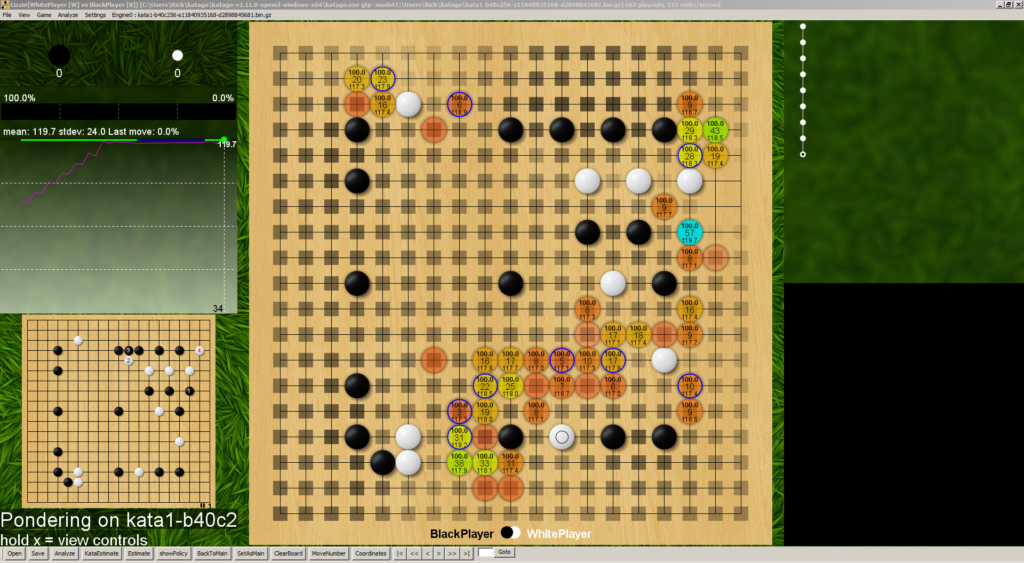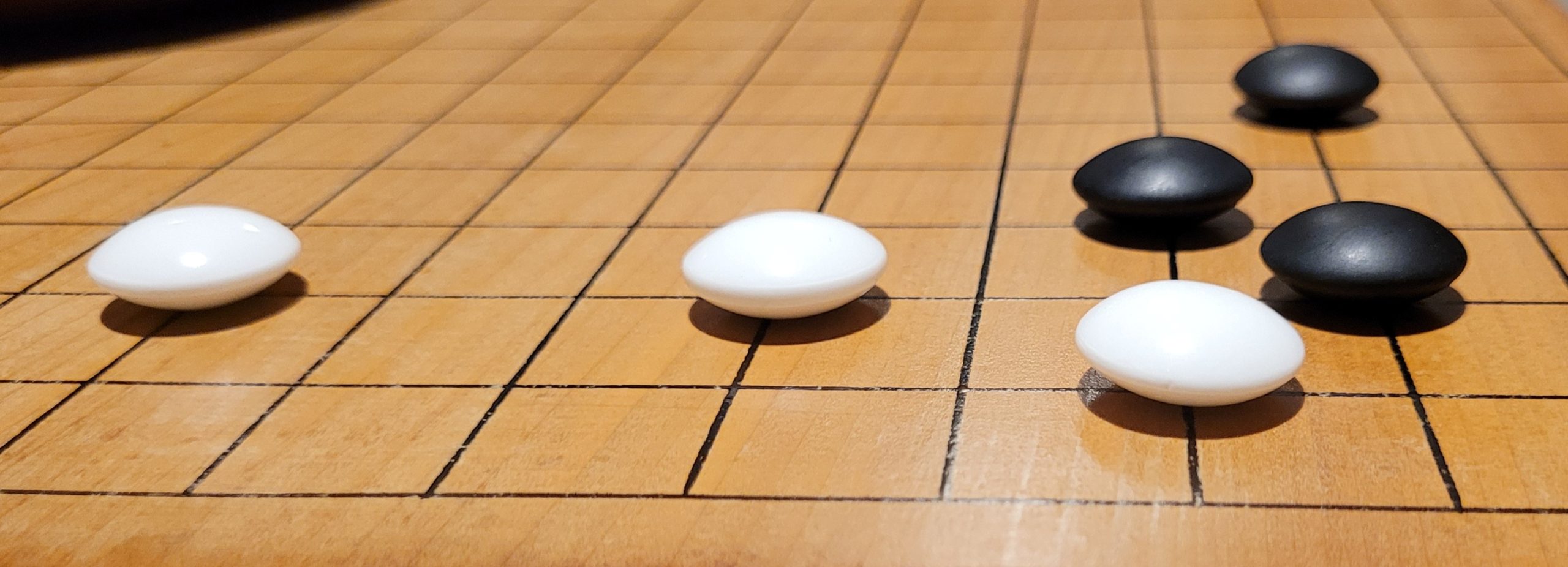Let’s play some handicap games !

Go players have the chance to be able to fair games over a wide range of skill and experience thanks to handicap games. Probably you have played some at the club or on the internet. Well unfortunately the Lizzie software doesn’t handle SGF (Smart Game Format) handicap games well with the AI engine analysis…
If we open this game with Lizzie we can see that it completely ignores our handicap stones !

I was unable to find a way in Lizzie to make it compatible with handicap games.
(Note that there is an « improved » version of Lizzie available here https://github.com/hope366/Lizzie-improvements which should solve this bug. However, there are two other methods.
1. Enter the game by hand by placing the handicap stones and passing as white either from memory or by opening the SGF in another window, not so practical…
2. Edit the SGF file to incorporate this into the file.
The SGF (Smart Game Format) is actually a pretty simple format. First, it is a text file, so you can open any .sgf file with your favorite text editor. The format itself is documented here https://www.red-bean.com/sgf/
I also sometimes refer to this guide https://homepages.cwi.nl/~aeb/go/misc/sgf.html and there is a wikipedia page https://en.wikipedia.org/wiki/Smart_Game_Format
So let’s open our 9-stone handicap game with a text editor, here notepad for simplicity because it is installed with windows.

For this simple game there is not much, If you take a longer game with time settings and comments discussed during the game, there will be more to the file.
Here what we want to do is simply remove the handicap « HA » entry and add the moves as if they were played.

Here the handicap HA[9] setting has been removed, komi KM is 0 which is correct. Now we’ll focus on the stone placement. We can see here there is a « AB » (Add Black) entry followed by coordinates. We want to transform this into moves, separated by « white pass » moves. To do so we will use « B » (Black) and « W » (White) entries. We can reuse the coordinates from the handicap stones for the « B » entries, and to represent a « pass » an empty coordinate is used : « W[] ». The entries are separated by a semicolon ;

This is a bit cumbersome, especially for a 9 stone game, but for low handicap it can be done quickly. As for those who know some programming a script could be written to do this automatically.
Finally « save as » .sgf here I saverd it as « h9_fixed.sgf », and open with Lizzie

Now Lizzie take into account the handicap, after the stones were placed as if played, and the AI can suggest moves.

Well this was a fun dive into SGF, but other than out of curiosity I would suggest using the « improved » version of Lizzie available here : https://github.com/hope366/Lizzie-improvements/releases this version works with handicap games out of the box !
